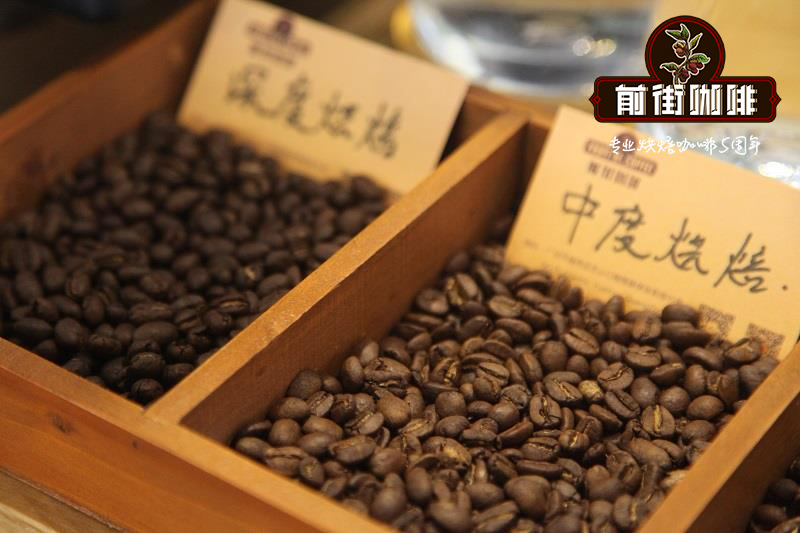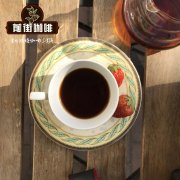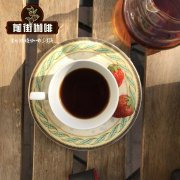What is decaf coffee? how do decaf beans come from? what are the kinds of decaf coffee?

Professional coffee knowledge exchange more coffee bean information please follow the coffee workshop (Wechat official account cafe_style)
It is said that the birth of decaf can be traced back to more than 100 years, but decaf is more mature in recent decades, decaf is to satisfy those who like the mellow taste of coffee, but also afraid that caffeine will harm their health. Especially in recent years in China, there are many topics talking about how caffeine is harmful to people's health, whether it is true or hearsay, but coffee still scares many friends who like it. Then low-caffeinated coffee will meet the needs of these friends.
● in the Customs Import and Export regulations of the people's Republic of China, the official customs name of decaffeinated coffee beans is: caffeinated coffee beans. Literally, we can clearly see that the processing method of decaffeinated coffee beans is to soak the raw coffee beans in liquid to remove caffeine, because caffeine is a white crystal powder that is very soluble in water. So what kind of liquid is used to remove caffeine? These are the three most commonly used processing methods in the world:
1. Reagent leaching method. This is a traditional method of caffeine leaching that appeared earlier, but the residue of the reagent, such as benzene or other harmful substances, will affect the health of drinkers.
2. Swiss water immersion method. It is to soak the raw coffee beans in higher temperature water for a period of time, and then use activated carbon to absorb caffeine, which has the greatest advantage of avoiding the residue of harmful substances or heavy metals in the reagent, so that drinkers can drink safely.
3. Carbon dioxide leaching. This is one of the latest and expensive leaching methods. Gaseous carbon dioxide will become liquid at more than 300 times atmospheric pressure. Using this liquid carbon dioxide to remove caffeine from raw coffee beans can remove caffeine content to the maximum extent and maintain the taste. However, due to the high cost of processing, this kind of low-caffeinated coffee is expensive on the market and is rarely available in China.
● compared three caffeine treatments: Swiss water extraction is the healthiest and moderately priced low-caffeine bean.
Low-caffeinated coffee beans, because they remove caffeine in the process of soaking, and also need to be steamed, boiled, high-temperature water immersion and other pretreatment processes before soaking, so it has a certain impact on the taste of coffee. Most low-caffeinated coffee has some characteristics similar to roast meat or baked butter, acidity is basically undetectable, but if the roaster is skilled. It can still bake a rich, sweet, decaffeinated coffee. At the current level of processing, the flavor of decaffeinated coffee is still in a state where you can't have both fish and bear's paw. If you are afraid of caffeine and can't bear to push away the cup of coffee at hand, I'm afraid you'll have to tolerate sacrificing some coffee flavor as a price.
Qianjie coffee: Guangzhou bakery, the store is small but a variety of beans, you can find a variety of unknown beans, but also provide online store services. Https://shop104210103.taobao.com
Important Notice :
前街咖啡 FrontStreet Coffee has moved to new addredd:
FrontStreet Coffee Address: 315,Donghua East Road,GuangZhou
Tel:020 38364473
- Prev

What is Decaf Coffee? How to make decaf coffee beans How to brew decaf coffee beans
Professional coffee knowledge exchange More coffee bean information Please pay attention to coffee workshop (Weixin Official Accounts cafe_style) ● What is caffeine Caffeine is a natural stimulant Caffeine can be found in many plant species. For the plant itself, caffeine acts as an insecticide, protecting the plant from pests. How much caffeine do humans consume from plants?
- Next

How to handle decaf beans? which cafes have decaf? price list of decaf beans
Professional coffee knowledge exchange more coffee bean information Please follow the coffee workshop (Wechat official account cafe_style) many Americans are experimenting with decaffeinated coffee in the hope of getting a perfect cup of coffee that only tastes coffee but does not stimulate the nervous system. But is decaffeinated coffee really decaffeinated? What's the difference between non-caffeinated and natural decaffeinated? Take away the coffee from the coffee
Related
- Beginners will see the "Coffee pull flower" guide!
- What is the difference between ice blog purified milk and ordinary milk coffee?
- Why is the Philippines the largest producer of crops in Liberia?
- For coffee extraction, should the fine powder be retained?
- How does extracted espresso fill pressed powder? How much strength does it take to press the powder?
- How to make jasmine cold extract coffee? Is the jasmine + latte good?
- Will this little toy really make the coffee taste better? How does Lily Drip affect coffee extraction?
- Will the action of slapping the filter cup also affect coffee extraction?
- What's the difference between powder-to-water ratio and powder-to-liquid ratio?
- What is the Ethiopian local species? What does it have to do with Heirloom native species?

